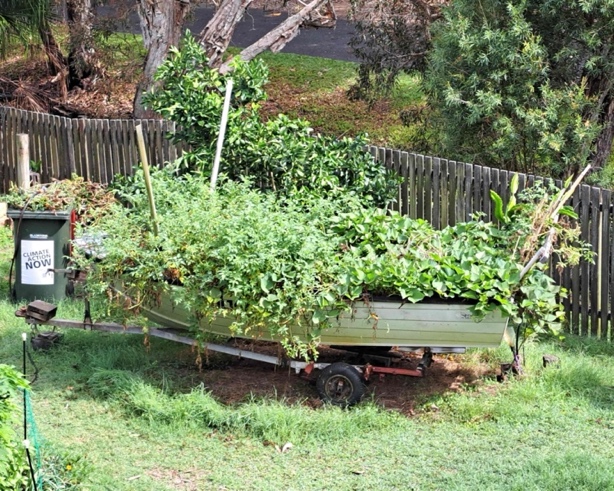Wicking beds can be made from almost any materials and are limited only by our imagination. Here are some examples:
Styrofoam Boxes
Styrofoam boxes of all sizes can be turned into wicking beds, from 50-litre boxes to 13-litre mini versions using 40 mm PVC pipe as a reservoir. These can be decorated and placed on tables for convenience.
If you want to make your own, check out our guide on making a Styrofoam Wicking Box.
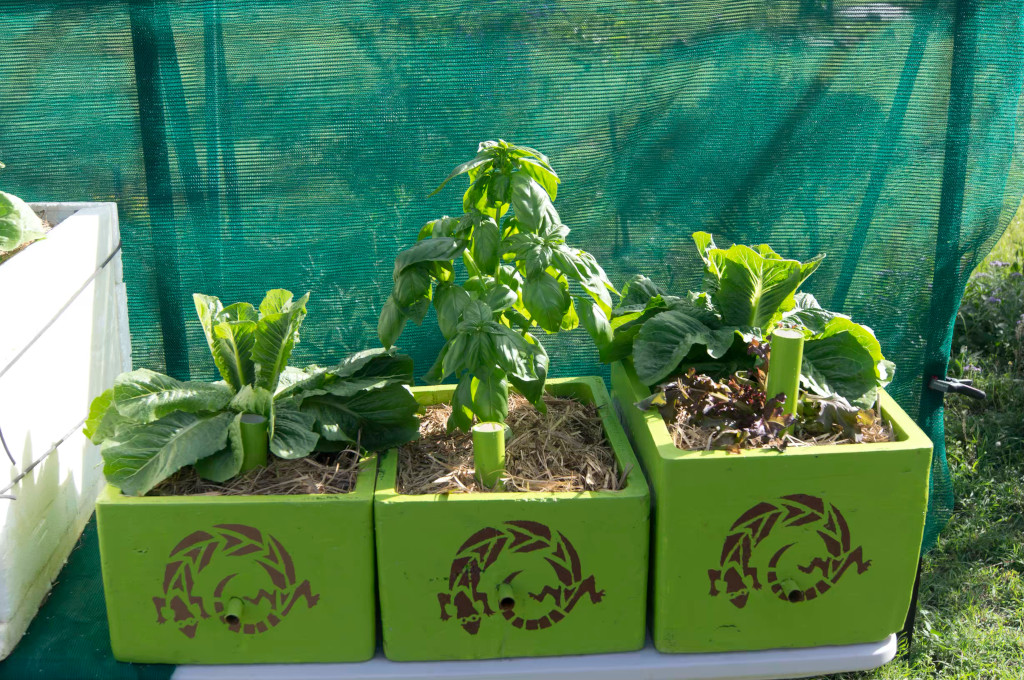
Drums
Metal and plastic drums (876 mm high, 597 mm diameter) can be cut to 400 mm high to match the maximum wicking height of 350 mm. Use food-grade barrels or thoroughly clean them.
A proper setup includes the drum, a fill pipe, a reservoir, and a 12 mm poly overflow pipe sealed into the wall with silicone. Avoid vertical cuts across the diameter, as they reduce soil space and require extra support structures.
Avoid vertical cuts across the diameter, as shown in the photo below. This requires extra support structures and thus cost. The ones on the photo have no overflow to drain excess watering and heavy rain. They are a swamp waiting to happen.
When cut to 400 mm high, all they need is the fill pipe, the reservoir and a 12 mm poly overflow from the reservoir through the wall, with the joint sealed with silicone.
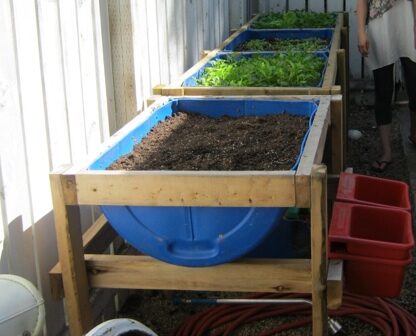
Wire Mesh and Weed Mat
Inexpensive wicking beds can be made using wire mesh and weed mat, requiring minimal tools: a wire cutter, C-clips, and scissors. The example below is made with 80 mm x 50 mm mesh and 1m wide weed mat. They can be made to almost any size and shape.

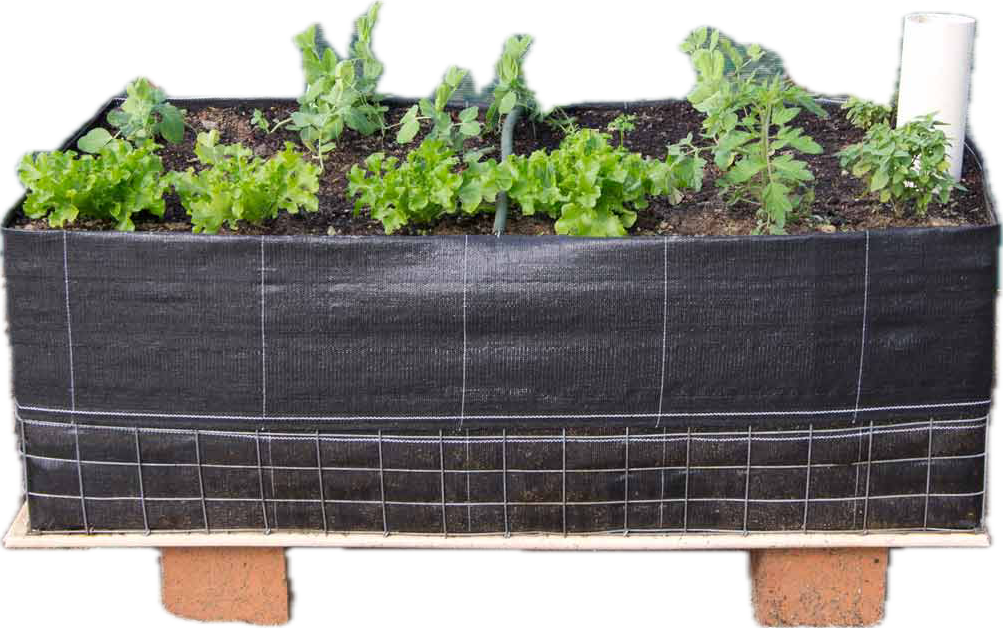
Plastic Containers and Tubs
Plastic containers and tubs work well as wicking beds. If you are using black containers, cover the outside with double shade cloth to keep them cool.
Cut a reservoir pipe to fit the tub, a fill pipe and a short length of poly pipe for the overflow, as shown in making a Styrofoam wicking box. Place the reservoir in the tub, drill a 12mm hole 85mm from the bottom and press the 12mm Poly overflow through the wall into the reservoir pipe. Then silica it in place. (The photo shows no overflow, which could lead to turning into a swamp during heavy rain or accidental over-watering.)
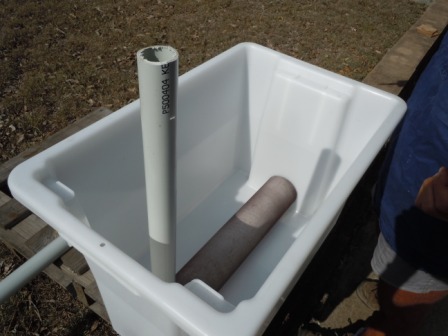
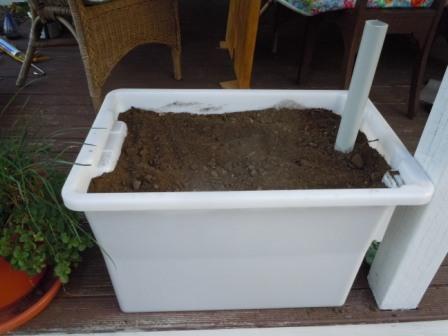
Concrete Tubs and Bathtubs
Concrete tubs and old bathtubs can be easily converted into wicking beds. An 80 mm outlet of 40 mm PVC pipe is sealed into the plug hole using silicone. A corresponding hole in the reservoir pipe is to be positioned over it.
One key difference when making them in this manner, is that your overflow is inside the reservoir pipe and one outlet hole in the reservoir hole is placed exactly over the drainage hole of the concrete tub. The other end of the reservoir pipe is sealed with an end cap or duct tape. In Bathtubs the overflow is the same, but the reservoir pipe is the length of the bath with several outlet holes no more than 70cm apart.
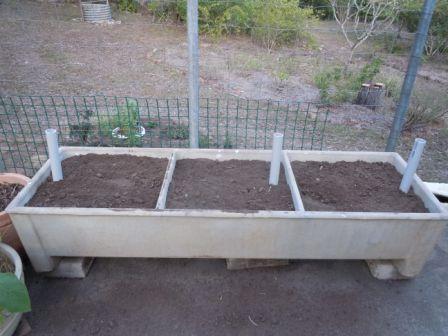
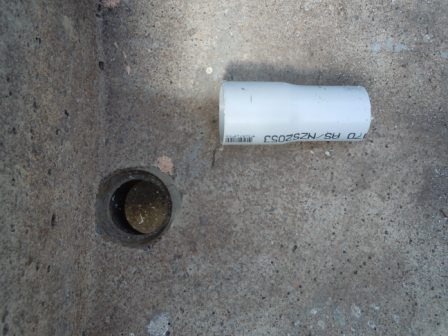
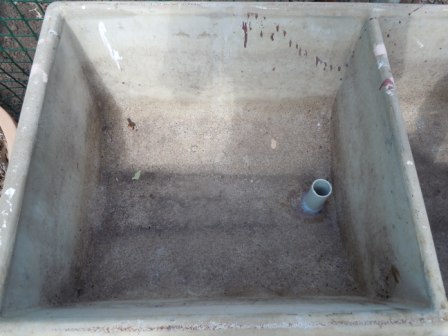
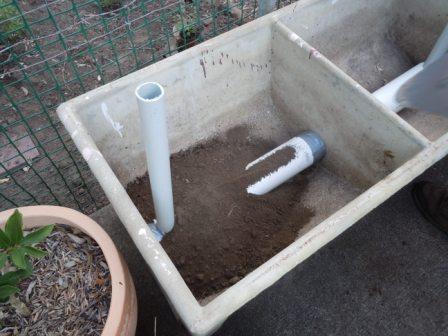
Galvanised Iron
Large galvanised iron containers make great wicking beds. A poly overflow pipe in a U-shape runs between the liner and the wall, then under the wall and back up to100mm above ground level.
In a round bed, the reservoir is made in a U-shape to ensure that no plant is more than 35cm from an outlet hole

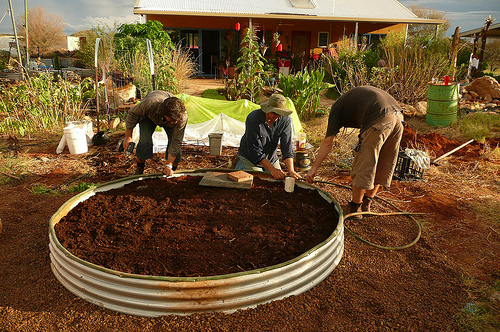
Sleepers
When using sleepers, reinforcement should be on the outside to keep the inside smooth and prevent damage to the liner.
See our guide on Building Wicking Beds for Schools for more details.
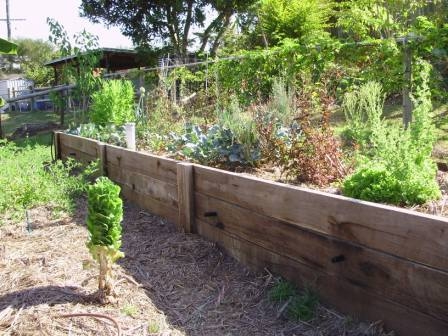
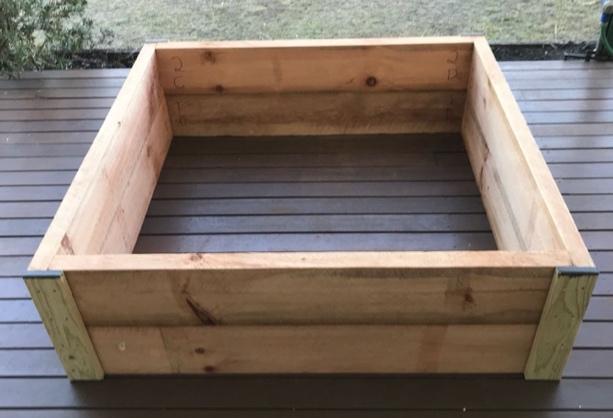
1,000 Litre Pods Cut in Half
Large 1,000-litre water pods can be cut in half and placed under shade for efficient wicking beds. Make sure to only use pods that have not been used for dangerous chemicals.
To store more water and ensure no plant is more than 35cm from an outlet, the reservoir pipe can be made in a U-shape.
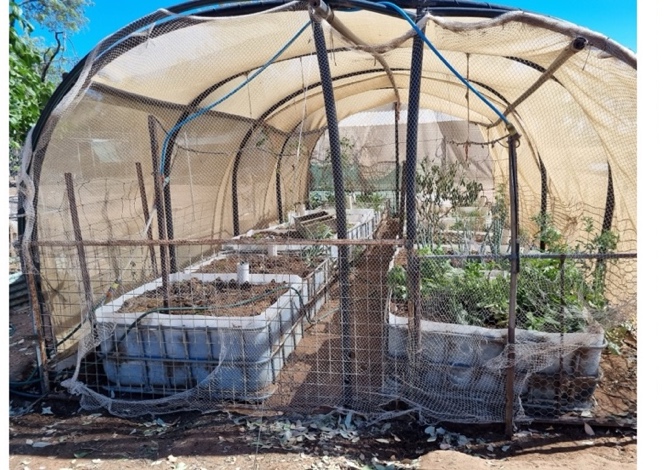
Even Old Leaky Boats
An old boat can be converted into a mobile wicking bed. The bow is lowered, the stern raised, and the bungs removed to allow excess water drainage when it rains. This setup is ideal for renters who want to take their wicking bed with them when they move.
